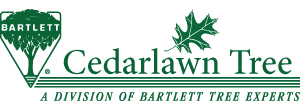Storm Related Tree Damage – Part III
Storm Related Tree Damage – Part III
In the previous installments of this 3-part blog we have examined potential causes of storm-related tree failures. In this blog we will discuss the role certified arborists can play in reducing tree damage during storms. There are 3 questions that need to be answered when examining trees for potential storm-related damage: 1) does the size & location of the tree make it particularily susceptible to damage? 2) how does the growth habit influence its susceptibilty to storm damage and 3) are there decay or injury issues that make the tree especially prone to storm damage?
Tall trees not protected from high winds by man-made structures or geographical features may incur the full force of wind gusts during storms. Even the smallest structural defect may then dramatically increase the potential for damage. Restricted or shallow rooting determined by growing environment or saturation of soils by heavy rains can increase uprooting potential especially if trees are in exposed locations. Changes made to areas surrounding a tree can influence its damage potential. Construction activities such as home building can result in removal of surrounding trees. Trees whose form and wood structure were developed by being partially shaded and protected from wind forces are now fully exposed to the forces of nature. Construction damage to wood or root zones further compromises these trees.
While we often think of storm damage as wind-related, lightning strikes can also destroy and damage trees. Higher geographical elevations and tree height influence the potential for lightning damage. Trees in open areas, even if not fully mature, become more susceptible simply because they may be the tallest object in the surrounding area. Arborists can install lightening protection in high-valued or very susceptible trees.
Tree species is also a factor to evaluate for damage potential. Characteristics associated with a particular species such as mature height, typical branch angles, wood strength and wound/decay compartmentalization capacity influence damage susceptibilty. The form and structure of individual trees need to be examined to evaluate potential for storm damage. Narrow branch angles that form weak connections with a higher propensity for breakage need to be identified. Codominant leaders (two similarly-sized trunks that split off) often have included bark (where bark grows against bark and does not form a true attachment) that forms a weak union between the two stems. Arborists can identify and install cabling to help trees withstand the forces of nature.








